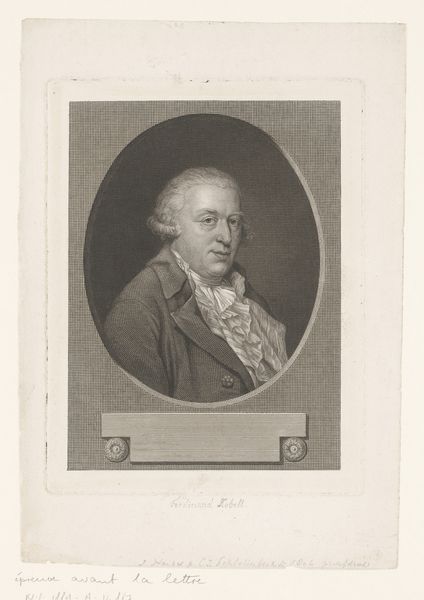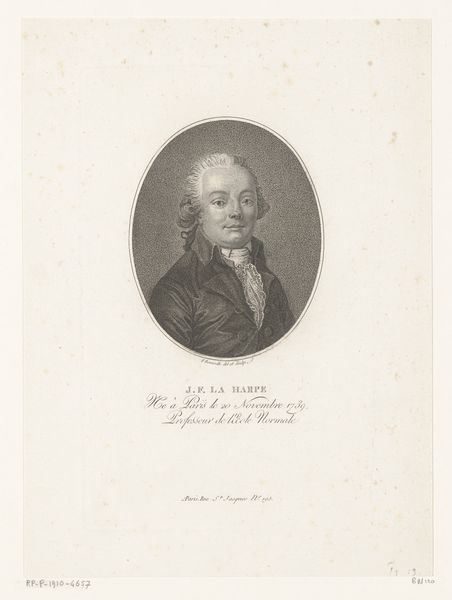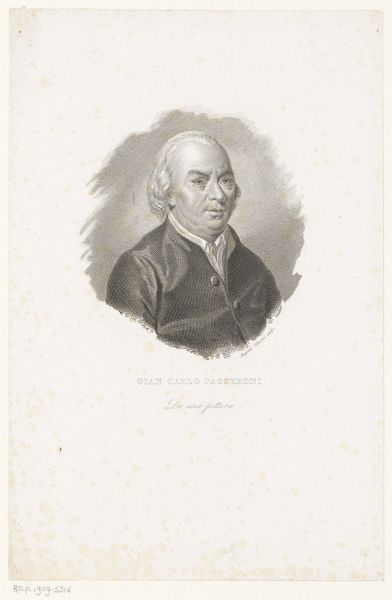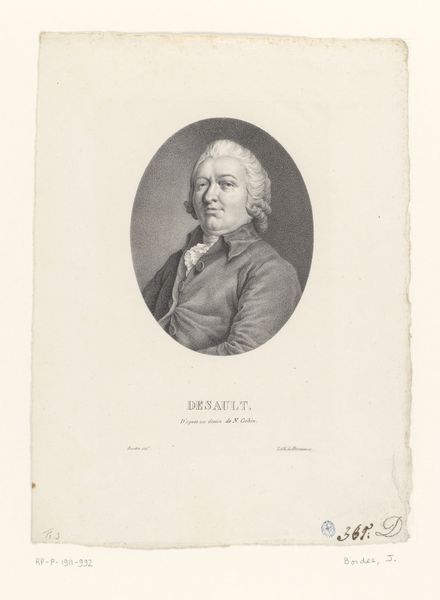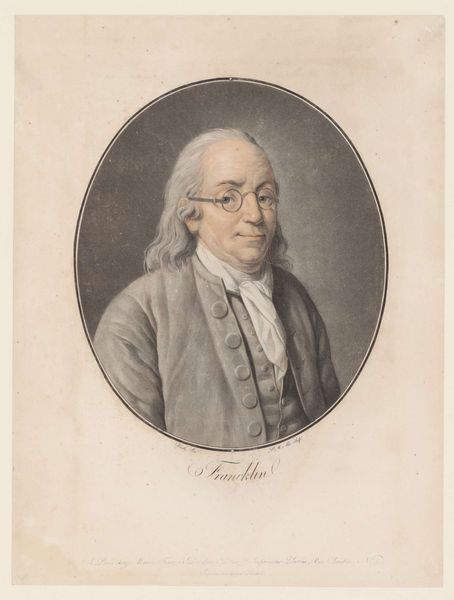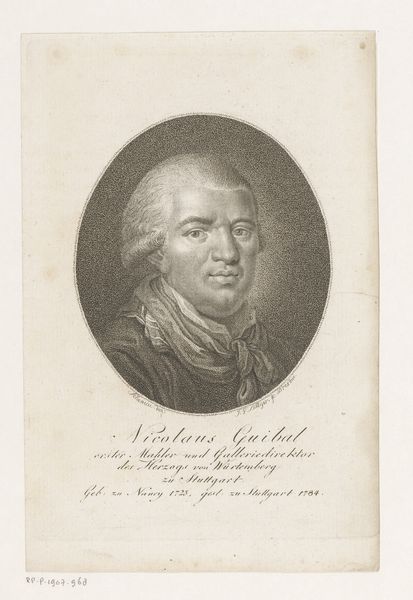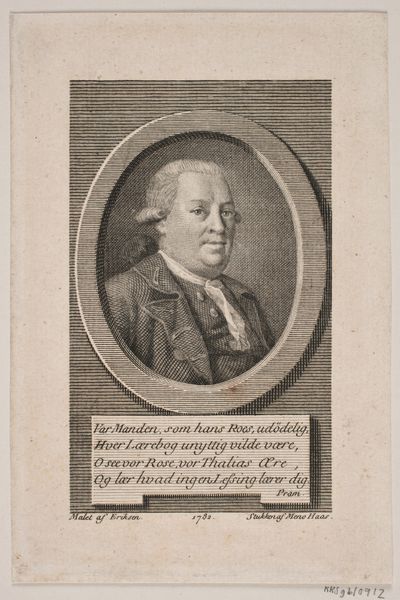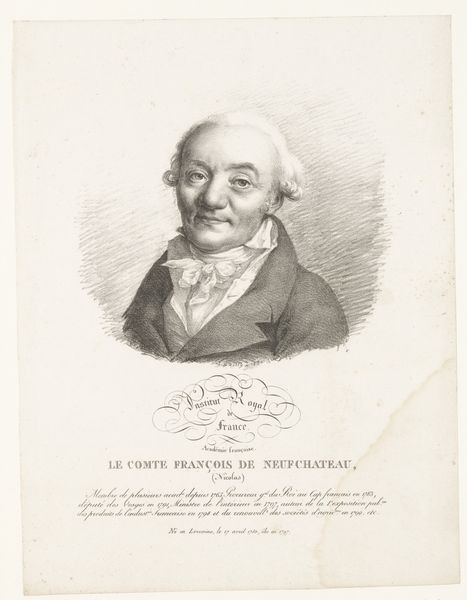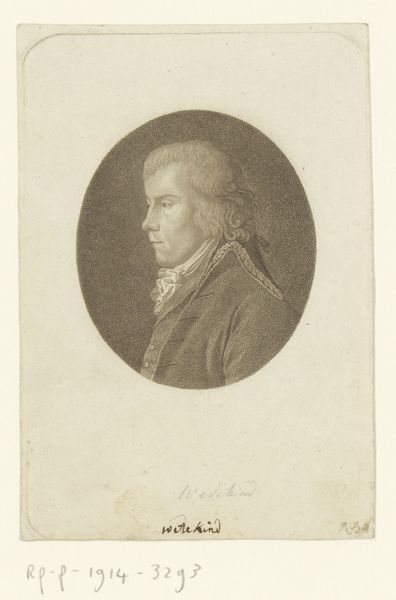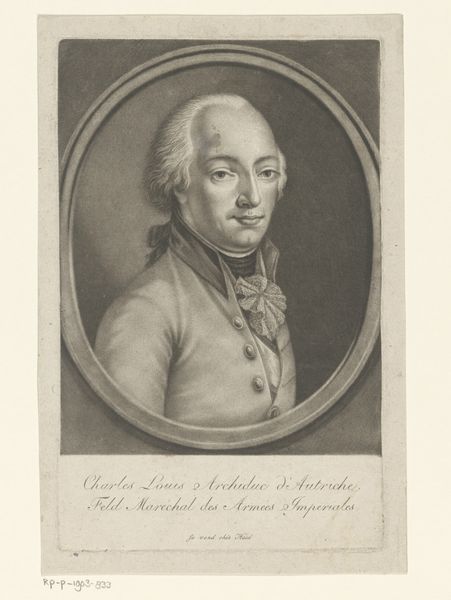
print, engraving
#
portrait
#
neoclacissism
# print
#
old engraving style
#
figuration
#
portrait reference
#
history-painting
#
engraving
Dimensions: height 170 mm, width 128 mm
Copyright: Rijks Museum: Open Domain
This is Jacques Louis Pérée’s portrait of François Carletti, likely made around 1795. The image is an engraving, a printmaking technique where lines are incised into a metal plate, which is then inked and pressed onto paper. Look closely, and you'll see how the density of the lines creates the illusion of tone and form. This wasn’t just a reproductive process. Pérée, the engraver, was a skilled artisan, capable of translating the likeness of Carletti into a compelling image. The quality of the engraving would have been judged on its fidelity to the original, but also on the skill demonstrated in the handling of the medium. Engravings like this were part of a wider economy of images, circulating portraits and other scenes to a broad public. They were a form of cultural currency, spreading ideas and solidifying social hierarchies. This print speaks to the labor involved, the artistry required, and the social function of images in the late 18th century. All these elements are crucial to understanding its full significance.
Comments
No comments
Be the first to comment and join the conversation on the ultimate creative platform.
